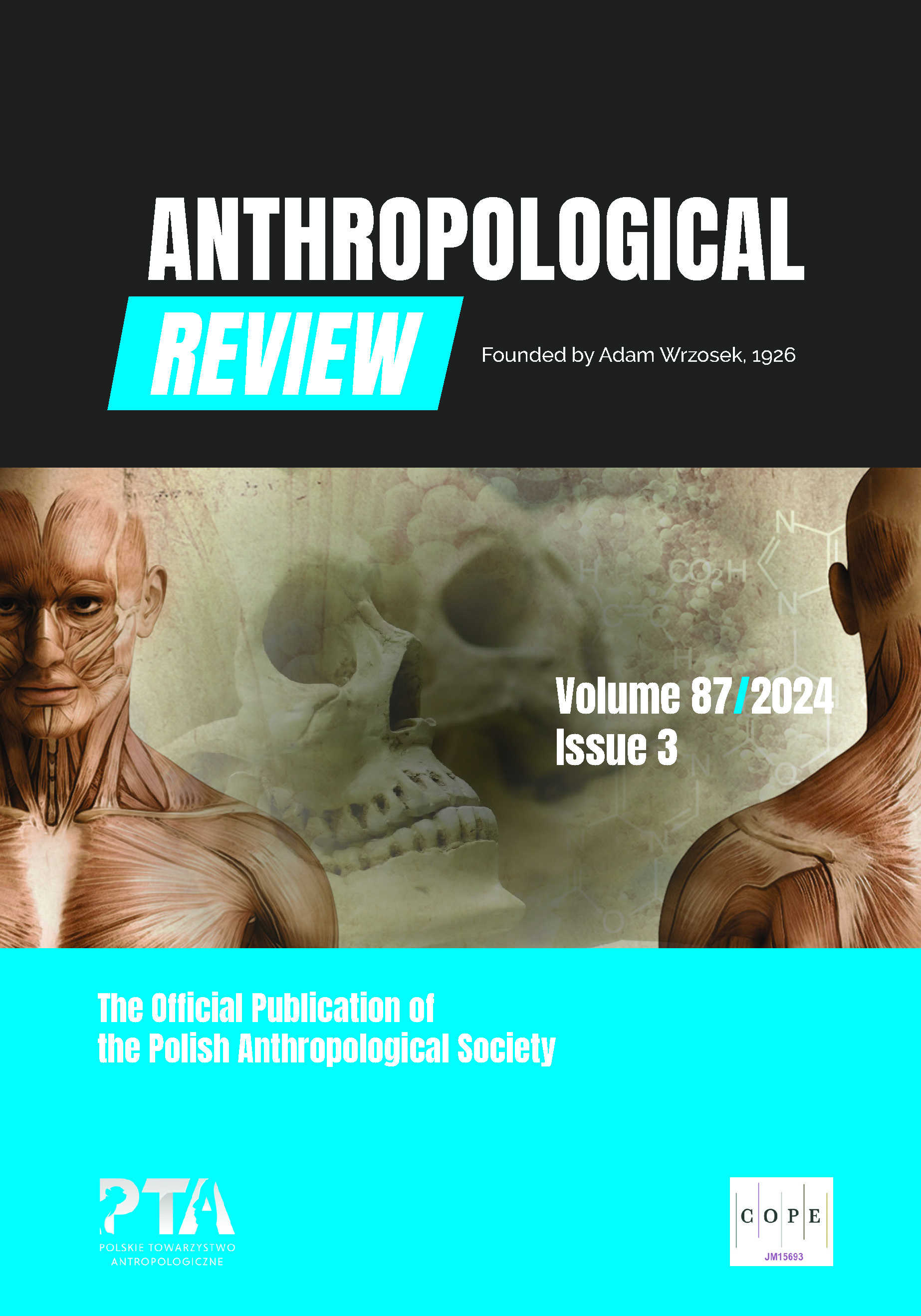Mismeasurement of the virtual human body: analysing error of landmark acquisition
Mismeasurement of the virtual human body: analysing error of landmark acquisition
Author(s): Dominik Černý, Petra UrbanováSubject(s): Anthropology
Published by: Wydawnictwo Uniwersytetu Łódzkiego
Keywords: digitization; landmarks; 3D model; digitization error; morphology; morphometry
Summary/Abstract: Modern physical anthropology increasingly employs non-invasive methods that use 3D models representing the human body. Frequently, these are 3D models of a person’s physical appearance, i.e., face or body. A traditional approach to analyse these records is to process discrete points (landmarks, feature points) collected manually on the model surface. The digitization of landmarks and associated errors have been sufficiently studied in the context of the human face, due to its functional and aesthetic importance. However, other parts of the human body have not received the same level of attention.The aim of the present study was to quantify the error of body landmarks when collected in 3D fullbody models and to explore how it relates to other model properties, such as a demographic and somatic indicators.The study tested two datasets of 10 body landmarks acquired in 60 models (32 males and 28 females). The data acquisition was carried out during the time span of 14 days. The magnitude of the digitization error for each point was acquired and tested between groups defined according to their anatomical location (shoulders, arms, legs; torso and limbs or body side), sex, age, height and body type.The results of this study showed that the error of digitising landmarks in a 3D model was greater compared to the error reported in the literature when acquiring landmarks on the human body. The digitization error was independent of participants’ age, sex, height, and body type but was correlated with the anatomical location, where the upper chest, neck, and back on the knee yielded the highest digitization errors. In addition, this study showed that landmarks located on the shoulders and arms exhibited an error which was correlated negatively with the volume of the lower and upper half of the body and positively with the body depth.
Journal: Anthropological Review
- Issue Year: 87/2024
- Issue No: 3
- Page Range: 77-95
- Page Count: 20
- Language: English

